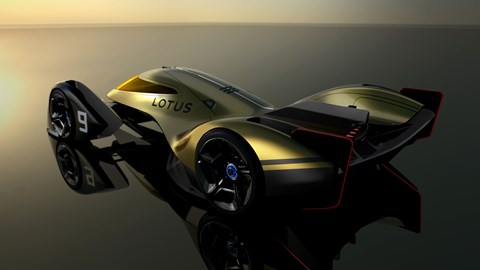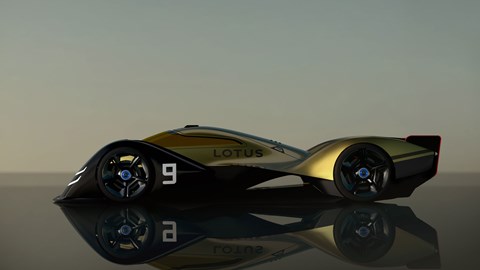► The future of racing according to Hethel
► All-electric, torque-vectoring
► And movable aero
Thought the Lotus Evija was out there? Try the E-R9, a new design study from Hethel that predicts the electric future of motorsport. It’s been designed to a set of imaginary regulations that could exist in 2030, so features some outrageous fighter-jet-style innovation.
‘What we’ve tried to do is to push the boundaries of where we are technically today and extrapolate into the future,’ said Richard Hill, chief aerodynamicist at Lotus. ‘The Lotus E-R9 incorporates technologies which we fully expect to develop and be practical. Lotus has an amazing history of developing unique solutions, and we’ve done it many times in motorsport and with our road cars.’

It looks like a plane
The main structure of the EV racer is a delta-wing upper body, but as with all these concept cars, the E-R9 would use morphing body panels. A bit like F1’s DRS (drag reduction system) – but to a much greater extent – these moving bits of aero would allow drivers to change the downforce characteristics of the car based on the part of track they’re on.
And it’s electric

As you’d expect, the E-R9 uses an electric powertrain, with a motor-per-wheel for advanced torque-vectoring. And like other concepts, it’s another bet on the evolution of battery tech; ‘Battery energy density and power density are developing significantly year on year,’ said Louis Kerr, principal platform engineer on the Lotus Evija.
‘Before 2030, we’ll have mixed cell chemistry batteries that give the best of both worlds, as well as the ability to ‘hot-swap’ batteries during pitstops.’